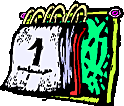With The Commentary of the RABAM


Parshas Bereishis, being psukim 1:1 though 6:8 of Sefer Bereishis.
Bereishis bara Elohi… In the beginning, G-d created…. The first instance of the accusative (aleph-sav), which per Rabbi Akiva begs for commentary.
In this weeks Parsha, Parshas Beraishis, we once again start the cycle of readings from the Toirah by reading the two creation epics. The first is a methodological, step by step process drawn out over seven days starting with the creation of the sky, dry land, etc., then vegetation and animals culminating in the creation of man on the sixth day, and concluding with a day of rest on the seventh. Immediately after, we read the play-dough version, where Adam is created out of clay, much like a dreidel, and only afterwards are animals created.
Parshas Bereishis, creation epics = The wet and the dry are separated, the light and the dark, time and space. Then growing things and snarling things, and finally man. Knowledge comes, and with it suffering. Whereupon the concept of incest rears its head, along with fratricide. Told two ways, in such a way as to suggest two different tellers.
Seven days = A week, six days normal, one day strange. The seventh day is the paradigm and perfect exemplar of days. In much Semitic thought, for every class of things or ideas there is one that stands out as the epitome, for instance Yerushalayim is the epitome of cities, the land is the epitome of lands, the Bnei Yisroel are the epitome of peoples, Avraham is the epitome of tribal ancestors, Moishe of leaders, the malchus Beis Dovid of memleches, Edom of evil, and so forth. One stands in for all of them, but also is the model for all of them.
There are traces in the Torah of this also applying to deities – consider that in Shmos, psook 9:1, the Aimishteh is stated to be the god of the Hebrews (“Adonai Elohei ha Ivrim”), and that later in parshas Bo (psukim 10:1 through 13:16), it is made clear that the Aimishteh is in opposition to other deities, as it says in psook 12:12 "ve avarti ve eretz Mitzrayim ba laila haze ve hikeiti chol bechor be eretz Mitzrayim, me adam ve ad behema u ve chol elohei Mitzrayim e'ese shefatim; Ani Ado.nai" (For I will go through the land of Egypt during that night, and will whack all the first-born in the land of Egypt, both man and beast, and against all the gods of Egypt I will make judgment; I am the Lord.).
From this one can see that of the category that comprises divinity, the Aimishteh is the epitome, the be all and end all. Though, at that time, it was thought that there might be others. Indeed, Elohim is a plural, and the many other names of the Aimishteh suggest a vast vocabulary for naming the divine in the Semitic world of four thousand years ago.
Remarkably, in Parshayos Va’eira and Bo, religion is conflated with magic and calling down curses – this may explain why in Seifer Dvarim (Deuteronomy), Parshas Shoftim, which occurs forty years later, it is written in psook 18:10 "lo yimatze ve cha maavir beno u vito ba esh kosem kesamim m'onen u menachesh u mechashef" (There shall not be found among you any one that passes his son or his daughter through the fire, one that uses divination (kosem kesamim), a soothsayer (m'onen), or an enchanter (menachesh), or a magician (mechashef)); 18:11 “ve chover chaver ve shoel ov ve yidoni ve doresh el ha metim” (or a charmer (chover-chaver), or one that consults a ghost (ov) or a familiar spirit (yidoni), or a necromancer (doresh el ha metim - interactor with corpses/the dead).). Which, mi lifnei faro, Moishe seemed dangerously close to doing. One could be forgiven for misreading that performance.
Dreidel = A four sided spinning top (svivon, oyf loishen koidesh) which symbolizes something who knows what. Only used for a few days every year at Chanuka, yet every female relative you had when you were a child kept giving you another one.
You play with it, dutifully, on the first day (neglecting all the others that you’ve ended up with over time – somewhere a box of neglected dreidelech is weeping), and you sing a little song about it (despite not having made it out of clay, nor actually having done so yourself). And with any luck, it keeps you occupied until some potato pancakes show up.
Nun (nisht, zilch), Gimel (gontz, ergo jackpot), Hei (halb, half the jackpot), Shin (shtelln, add another greenback to the pot). A great miracle has happened if you don’t lose a couple of hundred bucks to your cousin Morty.
One whole week of this, and you’re the one who is spinning. You’re ready to marry a red-headed shiksa and become a Scientologist. Move away from your relatives. Eat treif. Buy a Ferrari. Which explains, of course, why there are so many Jews in places like Alaska and Wyoming. No dreidels.
Rabbi Yitzchak asked: Why does the Toirah bring two such diverse stories that conflict so much side by side?
According to Rabbeinu Tam, the first creation epic is from a P source text and the second is from an E source text. But he wrote this AFTER he had contracted Altzheimers, so no one in Yeshiva quite knows what he is talking about.
Rabbeinu = Our rabbi.
Tam = Simple, straightforward. Tasty. El sabor autentico.
Rabbeinu Tam = French Torah and Talmud exegete. Yaacov Ben Meir, 1100 - 1171. He was the grandson of Rashi (Rabbi Shlomo Yitzhaki, 1040 - 1105), and the brother of the Rashbam (Rabbi Shmuel Ben Meir, 1083 – 1174) and the Ribam (Rabbi Yitzhak Ben Meir, late eleventh century to mid-twelfth century – exact dates of b. and d. uncertain).
Rabbeinu Tam is notorious for his gewaffel about mezuzos, tefillin, and shatnez. But despite that, he is much respected.
P source = the Priestly propagandists, whose version of events was spliced with that of the Elohist writers (E-source), and other elements, to form the Torah. This may seem like apikorsus, but really it amounts to nothing more than saying that Moses had help, and perhaps an editorial board to answer to. Unless you want to believe that an aged gentleman with a stammer and a stick really had the time to take dictation after babysitting six hundred thousand kvetching refugees every day while trudging through the sand.
Of course, if his secretarial pool had been able to read his notes better, the whole trip would’ve lasted no longer than that trip up to the lake last summer, instead of forty years. It’s all part of the divine plan.
You should read some material on the Graff Wellhausen hypothesis, as well as some of that deliciously apikorsische stuff on higher criticism. (Ed.: A good place to start is Richard Elliot Friedman’s “Who Wrote The Bible”.)
How much more likely that the creation myths were campfire tales told by a nomadic tribe in the wastelands south of Moab. But this line of thought has been closed off by our rabbis, whose wisdom matches that of the finest teevee preachers -- Baruch Hashem, we should be so full of chochma. Damn hippies.
According to the RADAK, the first creation epic provides the macro view, while the second epic is a focused version of the events of the sixth day during the creation of man. He attributes the second instance of the creation of animals, etc. as a prime example of corporate waste and mismanagement, and calls for a federal investigation as well as the addition of two outsiders to the Board of Directors.
Radak = Rabbi David Kimchi, 1160 - 1235. Commentator, linguist and grammarian from Narbonnensis. Author of an etymological dictionary of Hebrew. He was the son of Rabbi Yoisef Kimchi, and the brother of Rabbi Moishe Kimchi, who were also philologists and scholars of note.
The ROSH, on the other hand, attributes the duplication to editorial error. At press time, the Aimishteh forgot to hit the "delete" button on his first draft. After all, who is going to believe some story about a man made of mud, his silly wife made of his rib, a talking snake, and a magic tree? Come now, my little einikel in second grade can do better than that!
Rosh = Rabbi Asher Ben Yechiel, 1250 – 1328. Yet another Tosafist, student of the Maharam (Rabbi Meir of Rothenburg, 1215 - 1293). When crusaders went berserk in the Rhineland (1306), Rabbi Asher Ben Yechiel headed to Barcelona, then to Toledo, where he was appointed head judge of the Jewish community resident there. His emigration marks the shift in spotlight from the scholars of France and Germany to the scholars of the Sefarad (Spain).
If you know the Rosh, you must also know the Ran (Rabbeinu Nisim Ben Reuven Girondi, d. 1380), whose supercommentary on the mefarsh of the Rif (Rabbi Yitzhak El Fassi, 1013 – 1103) is printed in the back of the Gemoro, along with the Rosh and the Rif.
Talking snake = Who, for his part in the whole fruit deal, was cursed to crawl on his belly for eternity, so that we wouldn’t have to look him in the eye. Imagine the scene: “who told you to do that?” “A snake.” “A snake?” “Yes.” “You really expect me to believe that cockamammy story?!?!” “Yes.” “Okay, I’ll punish him too – if you’re SURE you ain’t gonna change your story”. No wonder snakes are pissed at humans.
The passage shows that man was given freewill, and that there are strings attached to that gift. But the snake was given a raw deal.
Einikel = Grandson. A totally unique little individual, who does not resemble any one else little brats at all. From ein (one) and einig (unique, and hence charming), with a diminutive ending. The epitome of grandchildren, all others should only be so good.
According to the CHADAN (a famous scholar of the 19th century also known as Reb Charles Darwin), the Toirah teaches us that living creatures started as simple beings, emerged from the sea to become land creatures, and finally evolved into man. He suggests, based on a Gemmarra in Chulin, that Adam was a "damned dirty ape" who couldn't keep his hands off of the forbidden fruit because it was actually a banana. He also suggests that Chava was an Australopithecus Afarensis who walked on two feet and dragged her knuckles on the ground, and who once denied Adam biyuh for two weeks because she didn't like the color scheme in his cave drawing.
Charles Darwin = Sworn enemy of the Kansas Board of Education. It must’ve been something he said. Maybe he skipped a speaking engagement there. Ignore Kansas. Kansas is a four letter word.
Chulin = A Talmud tract dealing with un-sanctified slaughter, in reference chiefly to kashrus.
Denied biyuh for two weeks = Should’ve been eighteen days (18 equals ‘chai’ – life), but there was a banana, you see. So of course the Aibishter cast the shgatzim out!
The SAGAF, on the other hand (that is, another famous scholar, Rav Sigmund Freud), notes that Chava was both attracted to and repelled by the snake, owing to her discomfort with heterosexuality and repressed memories of her brother's attraction to farm animals. He also suggests that Adam's ambivalence towards the Etz Hadass, the Tree of Knowledge, stems from his deep felt longing for his boyhood wet nurse.
Sigmund Freud = Also known as the Gaon of Vienna (1856 – 1939), much respected by doctrinaire psychotherapists such as your brother. As much an authority on the evolution of man as he was a Torah scholar. From this we should learn? Muhammad en-nabi said in his ‘recitational’ (Quran) that for knowledge one should even go to China. He said nothing about Vienna! Nothing! Nix!
Etz = Tree.
Da’as = Knowledge, wisdom.
Of course, the Kabbalists in the middle ages were not bothered by any of these questions. The Zoihar points to the confusion around the act of creation as a cosmic struggle between the Sefira of Yesoid, the male aspect of the Reboinoisheloilum, and the Sefira of Malchuss, the female aspect, also referred to as Shechina.
Kabalists = Not to be confused with Beis Hollywood, to which some Goyim belong. We will not speak of that woman and her song about Yitzhok Luria der heilige rabbiner fun Sfas! Kefira! I would prefer to speak of Reb Freud, and Reb Darwin. Did either of them sing? No? I thought so!
Zoihar = Splendor, radiance. But also evident, and hence that which is revealed. The name of a book which has sparked more debate in the last four centuries of Yiddishkeit than any other, including Tanya (by Rav Schneer Zalman of Lyadi, 1745 – 1813).
The Zohar was discovered in Spain in the thirteenth century by Moses Shemtov De Leon (1250 – 1305), who ascribed it to Shimon Bar Yohai, who lived in the holy land in the second century. But from this there is much doubt, as the style of Aramaic in which it is written reflects usages which can not be attested before the tenth century.
Perhaps it was, in the process of transcription over the centuries, rewritten?
But there are also concepts and linguistic backformations in the book wich indicate a later date of origin, as well as words malformed from Portugese, Spanish, and Arabic.
But what about the teachings?
Ah, now we’re really on thin ground, as there is evidence that Jewish mysticism existed before Rabbinic Judaism, and followed different chains of transmission before it burst out into daylight in the shadows of European Talmudism. There is no reason to assume that Kabbalah was quiescent for ten centuries, nor any cause to suppose that no traditions developed, were transcribed, or passed on. Conversely, there are indications that much was lost along the way, and perhaps that that which survived, did so for good reason.
But did Shimon Bar Yohai (active 135 CE to 170; a student of Rabbi Akiva) really write any part of the Zohar?
It is told that Rabbi Shimon dictated the Zohar to his student Rabbi Abbi before he died, finishing the work and leaving the world on the thirty third day after Pesach, in the presence of several of his Talmedim.
Given that Rabbi Shimon is quoted ad nauseum in the Talmud, along with his teachers, and his students, it seems unbelievable that no trace or mention of the Zohar should be found before Moshe Shemtov started selling pamphlets.
The male aspect naturally wants to describe a story, in this case creation of the universe, in a linear, fact based, structured, non-nonsense approach. The female side, however, likes to focus on creativity and feelings. What kind of fig leaf was Adam wearing? What did he dream about when he was in a "deep sleep"? Was the snake really evil, or just in the wrong place at the wrong time? Was Chava the tool of historical male dominance in a patrelineal society, yet struggling to emerge as a "modern" woman by attending local lectures while Adam works 12-14 hour days, just so the three kids can go to some overpriced Yeshiva?
Male aspect versus female side = The manifestations of evidence of the possible existence of the Aimishteh. Much stressed in Kabalah.
Overpriced Yeshiva = For there is no place where the Yeshivos are not overpriced! Someone, somewhere, has to pay for all the bocherim who head to kollel after several years of unproductive living, and somebody, somewhere, decided it might as well be you.
That, plus the almost daily paskening against kashrus certification from other beis dins, rabbeim who don’t play ball, and yidden we just don’t like, guarantees a fair amount of funding for some people. With all this going on, you wonder how come we’re not all wearing furs.
Oh wait. We are. My shtreimel just came back from the cleaners. So never mind.
In other words, the first creation story was from Mars, and the second was from Venus.
Ah gutten Shabbos, you Apikoress.



